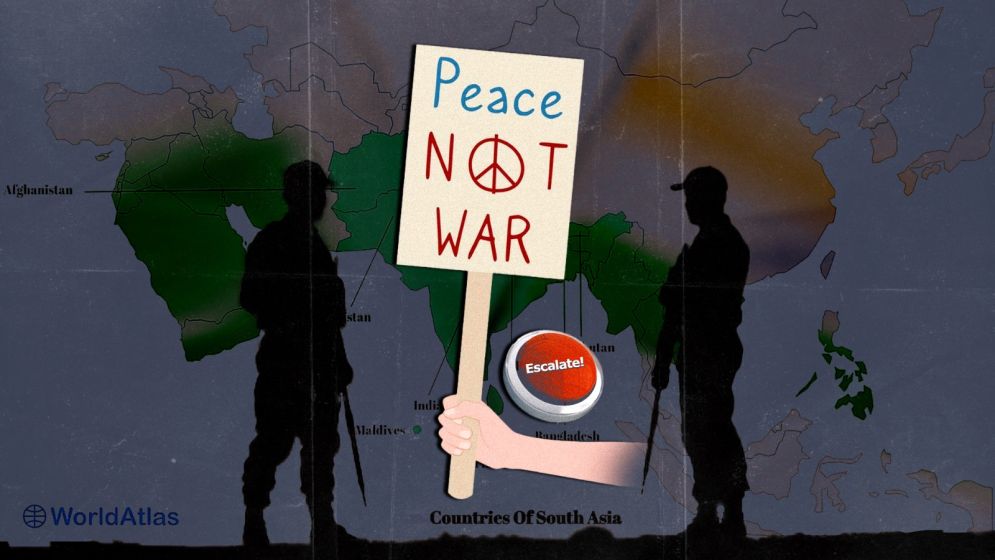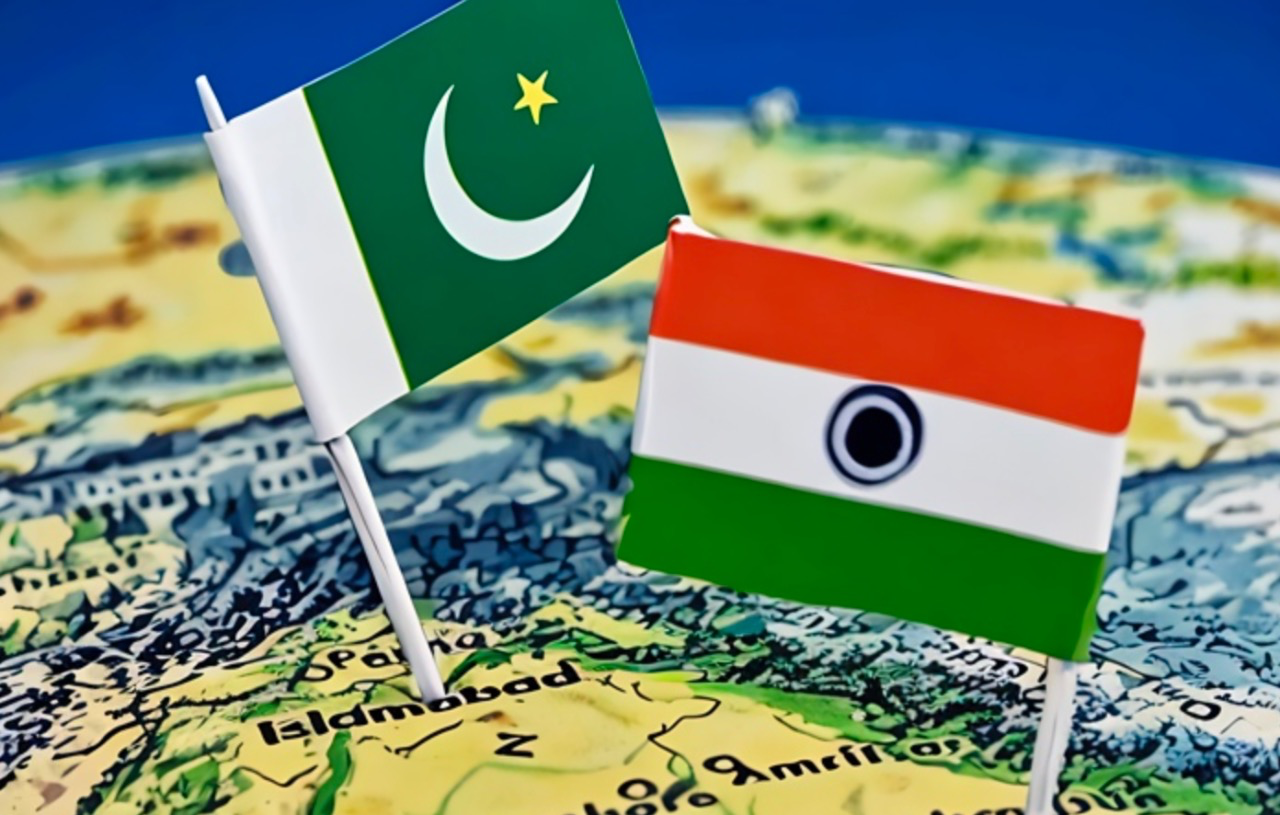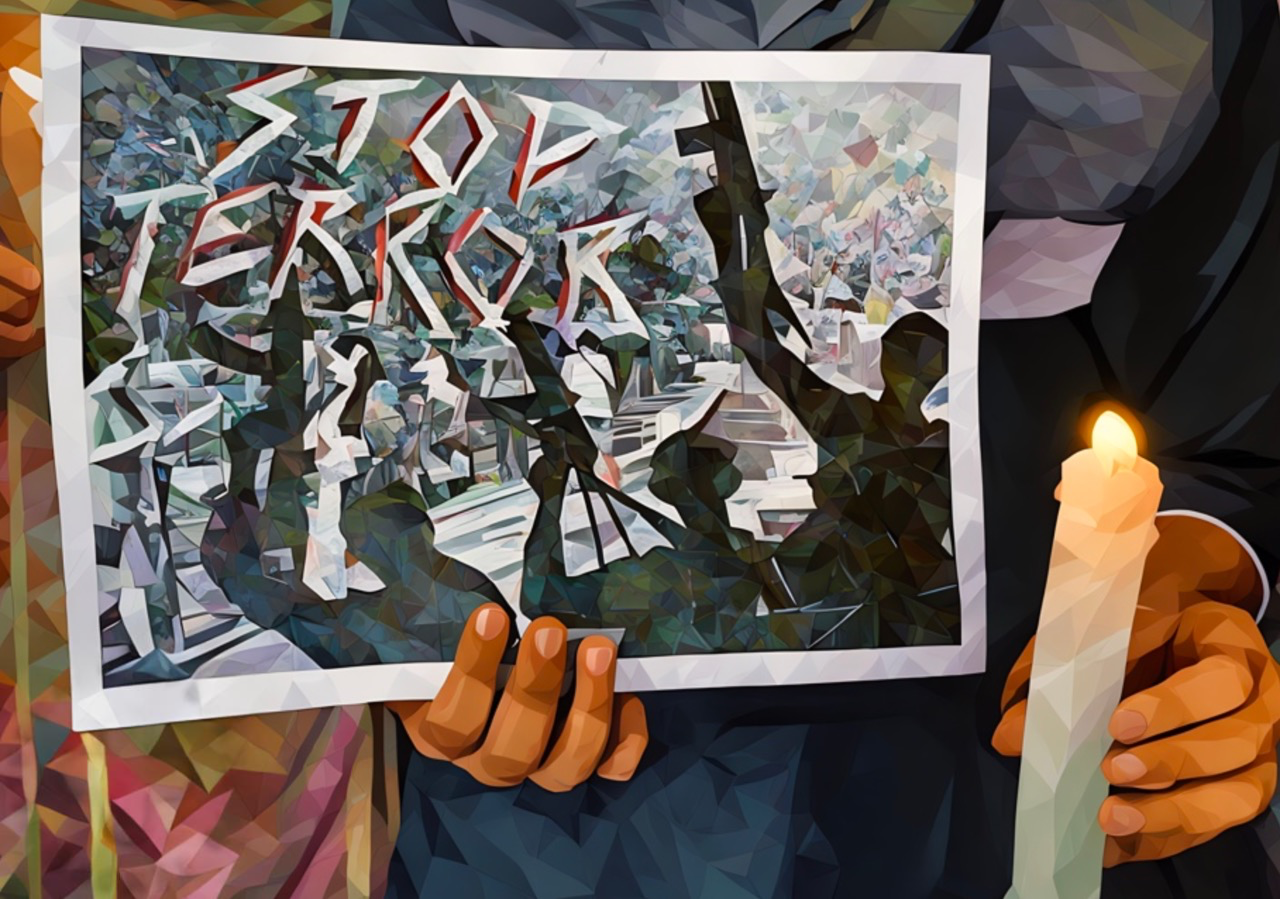In Kashmir’s shadow, South Asia faces a familiar nightmare…

The slow-burning rivalry between India and Pakistan is once again inching toward dangerous escalation.
On Thursday, Islamabad warned that it would consider any attempt by India to block the flow of crucial Indus waterways as “an act of war,” following Delhi’s threat to weaponize the Indus river system in retaliation for a deadly militant attack in Kashmir.
For the rest of South Asia–a region already burdened with fragile democracies, volatile borders and climate-driven resource stresses–this escalation should sound alarm bells. The stakes, quite literally, flow through the veins of the subcontinent.
In response to the Kashmir terrorist attack which took the lives of 26 civilians, India has unleashed a volley of punitive actions: suspending a decades-old water treaty, revoking visas, downgrading diplomatic ties, and initiating a full freeze on bilateral trade.
On the other side of the Radcliffe Line, Pakistan’s National Security Committee responded with its own retaliatory script: closing its airspace to Indian aircraft, reducing Indian diplomatic presence in Islamabad, and issuing warnings laced with military undertones.
The flashpoint this time is not just terrorism or territory. It’s water–a resource more vital, more existential.
Pakistan relies on the Indus and its tributaries for nearly 90 percent of its agriculture. And while the 1960 Indus Waters Treaty, brokered by the World Bank, had weathered wars and skirmishes for over six decades, India’s threat to upend it signals something far more ominous: the breakdown of even the thinnest scaffolding of trust in the region.
In Islamabad, rhetoric has turned sharper by the hour. Civilian and military leadership are singing in chorus: India’s actions are “unilateral, politically motivated, and legally void.”
Across Pakistan, anxiety is rising as Indian media fans the flames, and TV generals speculate about surgical strikes and military options.
New Delhi has not yet publicly named the group responsible for Tuesday’s attack in Kashmir, but the intent to punish Pakistan is already manifest.
As a Bangladeshi observer, this spiral is disturbingly familiar. We have watched India’s muscular foreign policy increasingly reduce diplomacy to theatre, especially when nationalism is on the ballot.
Pakistan, for its part, remains caught in the same paradox it’s never resolved– publicly denying involvement in cross-border militancy while harboring elements that have repeatedly triggered crises.
But what’s most troubling is how the rest of South Asia is left to deal with the fallout. Any conflict between India and Pakistan draws in the region– economically, diplomatically, even environmentally.
The threat to shared water systems reverberates far beyond Islamabad or New Delhi. Downstream countries like Bangladesh, already navigating delicate river-sharing agreements with India, are watching this standoff with unease.
If water is no longer off-limits as a tool of coercion, then what remains sacred?

A familiar playbook..or what?
In the decade since Narendra Modi rose to power in India, major militant attacks in Kashmir have repeatedly pushed the region to the brink.
Each time, the pattern has held: outrage in Delhi, blame directed at Islamabad, and a muscular military response from the world’s largest democracy–cheered on by a wave of nationalist fervor.
In 2016, it was Uri. In 2019, Pulwama. Nineteen Indian soldiers were killed in the first, forty paramilitary troops in the second. Each attack sparked retaliatory action by India–surgical strikes, then airstrikes–both hailed by the ruling BJP as demonstrations of India’s “new normal.”
Not just a strategic pivot, but a political doctrine: you strike us, we’ll strike harder.
What began as a terror attack in Pahalgam now has escalated into the threat of water warfare. That India’s ruling party would entertain such a move–one that would devastate Pakistan’s agricultural heartland and tear at the fabric of regional stability–reveals just how far this crisis has already drifted from reason.
Modi's messaging has always been brutally clear. "This is Modi,” he boasted at a rally last year, “we will enter the house [of terrorists] and kill them." His defense minister echoed the sentiment in April: "If they run to Pakistan, we will enter Pakistan and kill them."
This isn't deterrence — it’s choreography, designed for a domestic audience hungry for retribution, even if it leads the region to the edge of a cliff.
The strategic community in India, by and large, seems to agree. Retired generals speak of hitting the Pakistani military “where it hurts.” Former diplomats urge India to show its fangs.
And television studios, now functioning as war rooms, amplify calls for retaliation with near-religious zeal.
But here's the dilemma: when retaliation becomes political currency, what happens when the cost outweighs the logic? India’s signaling is so rigidly calibrated–attack equals retaliation–that any deviation risks political fallout at home.
That rigidity now ties India's hands even when strategic prudence might suggest restraint. And that’s the real danger: a feedback loop where each new crisis demands a louder response, a bigger explosion, a more dangerous gambit.
Meanwhile, the region holds its breath. In Bangladesh, Nepal, and Sri Lanka, the crisis stirs a familiar anxiety: that the fates of two billion people remain hostage to a rivalry driven more by political theater than regional wisdom.
From Dhaka, this all feels like a slow-motion calamity–one in which smaller neighbors have no seat at the table, yet will bear the consequences when things spiral.
For countries like ours, the India-Pakistan fault line is not some distant geopolitical drama. It shapes trade, migration, water security, and climate resilience.
When Delhi and Islamabad flex their muscles, it sends tremors through every capital in the region.
But unfortunately Kashmir, once again, is the matchstick. And South Asia, once again, is the tinderbox.

The usual suspect and the playground
The latest assault in the disputed Himalayan region–claimed by both India and Pakistan, has long been the powder keg of the subcontinent.
Western intelligence agencies have repeatedly indicated that Pakistan’s security apparatus tolerates, and in some cases empowers, anti-India militant groups operating within its borders.
India insists that these groups cross into its territory to carry out attacks– and in the past, it has responded with force. But Pakistan has its own counter-accusations, long alleging that India stokes insurgency in its restive Baluchistan province.
The violence there has grown in recent months, with attacks spreading from remote regions to strategic infrastructure and even targeting passenger trains.
But retaliation for the sake of optics–from both India and Pakistan is not a strategy. It's a spectacle– and it risks turning a regional crisis into a catastrophe with global implications.
Washington knows this. It always has. Newly declassified U.S. intelligence reports from the 1980s and 1990s show just how worried American analysts were, even during periods of relative calm in the subcontinent.
A 1989 State Department intelligence report warned that despite the low likelihood of full-scale war, the risk of nuclear exchange due to “miscalculation or irrational response” was “high.”
Four years later, in a 1993 National Intelligence Estimate titled India-Pakistan: Prospects for War in the 1990s, the CIA assessed that there was a 1 in 5 chance that a South Asian conflict could spiral out of control.
What triggered those fears? Exactly the dynamics we’re seeing today: rising right-wing extremism in India, persistent mistrust between Islamabad and Delhi, and competing claims over Kashmir.
Add to that the now-unmistakable reality of both countries possessing nuclear arsenals, and the calculus turns chilling.
Another declassified 1981 Special National Intelligence Estimate focused specifically on Pakistan’s nuclear ambitions and India's likely response.
It concluded that if Pakistan was seen stockpiling nuclear weapons, India might preemptively strike its nuclear facilities. While such a scenario has– so far– remained theoretical, the conditions that made it plausible then remain dangerously relevant now.
These assessments were grounded in a sober understanding of South Asia’s political fragility and the ever-present risk of nationalist overreach. And today, the warning signs are flashing once again.
From Dhaka, what’s clear is that the India-Pakistan rivalry no longer exists in a vacuum. The rest of us–Bangladesh, Sri Lanka, Nepal, Afghanistan– are not spectators.
We are stakeholders in the stability of this region, and we will bear the costs of its unraveling.
The next misstep could wreck decades of development gains, trigger refugee flows, or worse, draw the world’s two most populous nations into a nuclear standoff that no one can control.
India’s hawkish posturing may play well on the campaign trail. Pakistan’s defiance may rally short-term solidarity. But neither country can afford to ignore the stakes.
And South Asia, with its bruised borders and broken promises, cannot afford to watch silently while two wounded giants lurch toward the abyss — again.
This isn’t 2019. It’s more dangerous. And this time, we may not get to see Pakistan serving tea to a captured Indian soldier to cool off the escalation.
—
Md Sazzad Amin is an entrepreneur and an armchair political analyst

